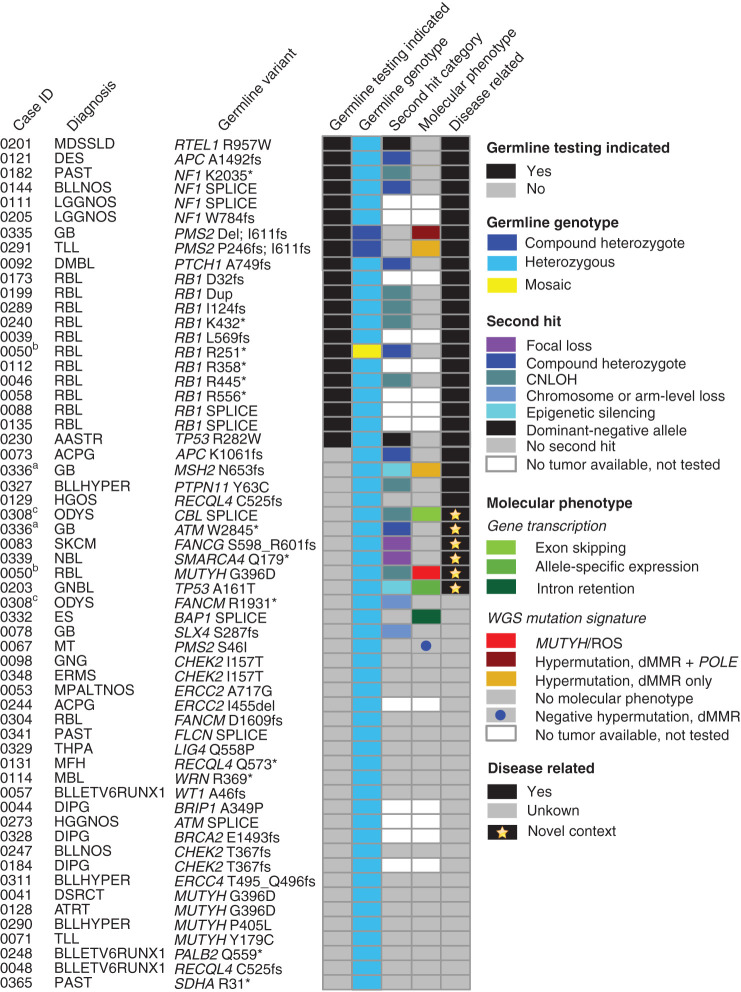Figure 5.
The impact of somatic variation in establishing disease relevance of deleterious germline variants. Each row represents a unique patient. From left to right, the columns are as follows: “Case ID” gives, the last 4 digits of the patients' IDs (compare Supplementary Table S8, column A). “Diagnosis” gives the disease code used internally (compare Supplementary Table S8, column B). Note: Matched superscripts indicate mutations in the same patient. “Germline variant” lists the gene and amino acid change. “Germline Testing Indicated” signifies patients whose cancer or other phenotypic characteristics suggested the patient and possibly the family should undergo germline testing (black tiles). “Germline genotype” gives the genotype of the variant indicated in the “Germline variant” column. “Second hit category” gives the genetic configuration of any genetic or epigenetic alterations affecting the remaining wild-type gene copy in the tumor. “Molecular phenotype” pertains to evidence in the DNA sequence of the tumor as to the activity of the germline variant. “Molecular phenotypes” includes features such as splice aberrations visible in the RNA-seq data and mutation signatures. Tumor second hits and molecular phenotype were not available for some patients due to absence or inadequate tumor for testing (see Methods). The 5 columns of tiled cells are sorted to group germline mutations by “Disease related” and then secondarily by “Germline Testing Indicated.” dMMR, deficient MMR.

